Tags: Comet
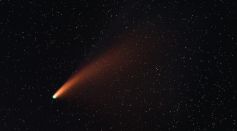
Comet Releases Gaseous Innards From Its Freezing Cryovolcanoes

More Updates About Oumuamua: First Interstellar Comet's Strange Orbit Explained by Hydrogen Outgassing From Ice, Study

Interstellar Object 'Oumuamua Is Not an Alien Craft, But a Rock That Was Passing Hydrogen
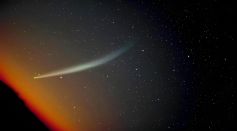
Newly Discovered Comet Is Making a Close Approach Toward the Sun; It Becomes as Bright as a Star in 2024, Astronomers Say

Blazing Green Comet To Loom Beside Mars; How To See This Rare Cosmic Sighting?
Mount Kilimanjaro-sized Comet Possibly From Another Solar System Survives After Making Closest Approach to the Sun
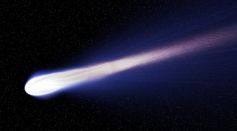
Huge Atypical Comet Straightly Moves Toward the Sun, Leaves Trail of Ice
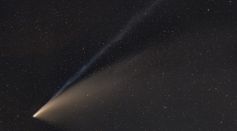
Comet C/2022 E3 (ZTF) Briefly Developed Bizarre 'Anti-Tail' That Seems To Break Laws of Physics

Green Comet Will Soon Greet the Night Sky in Its First Appearance in 50,000 Years
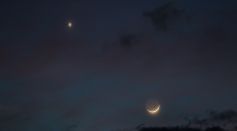
What's up in the Sky This Month? Astronomical Events in January 2023 Feature 2 Conjunctions, Stars, Comet
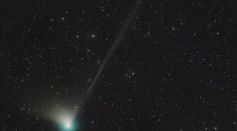
Bright Green Comet Last Seen 50,000 Years Ago Will Pass by the Sun and Earth This Year
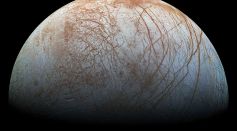
Comet Strikes on Jupiter's Europa Could Have Delivered Ingredients for Its Hidden Ocean, Study Reveals

Leonid Meteor Shower Set To Light Up the Night Sky This Week; Here's When and How To Watch It
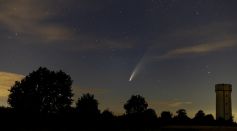
Meteor Fireball in Madrid Identified as the Alpha Capricornids Meteor Shower Body 169P/NEAT Comet
Comet C/2017 K2 (PanSTARRS) Leaves Astronomers Confused as Space Rock Heads to Sun After Visiting Earth

Comet Twice the Size Of Mount Everest Making a Safe Flyby to Earth Thursday: Watch Comet C/2017 K2 (PanSTARRS) Using a Telescope
Comet K2 Is Heading Towards Earth This Week, NASA Says

Giraffe-Sized Asteroid to Pass By Earth Safely on Thursday; NASA Spots Another Space Rock Approaching in September

Sun Roasts Comet 323P/SOHO to Death After Going Too Near Its Hot Surface
Largest Comet Outburst Leaves Dust Trail That Looks Like an Hourglass
Most Popular

Largest Known Volcanic Aquifer Discovered Beneath Oregon's Cascades

New 'Supergiant' Sea Bug Found in South China Sea, Named After Darth Vader

Mediterranean Sea Was Refilled by a Catastrophic Flood Millions of Years Ago

Mysterious Cosmic Waves That Sound Like Birds Detected in Unexpected Space Region





